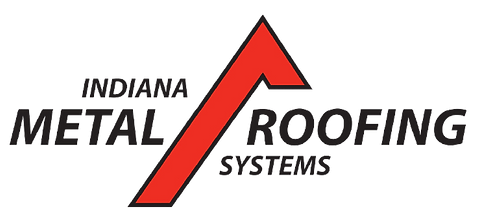Standing Seam Metal Roof Cost Expectations for 2024
- Joseph Justice
- Dec 11, 2024
- 4 min read
Indiana Metal Roofing Systems in Fort Wayne, IN, offers premium roofing services, including standing seam metal roofs that combine durability, aesthetic appeal, and energy efficiency. If you're considering installing a standing seam metal roof in 2024, understanding the associated costs and benefits is essential. This guide breaks down key factors that influence the cost of these roofs and how to make the best choice for your home.

1. Key Benefits of Standing Seam Metal Roofs
Standing seam metal roofs are a popular choice for homeowners seeking a long-lasting and energy-efficient roofing solution. Key benefits include:
Durability: Standing seam metal roofs last between 30 and 50 years with minimal maintenance.
Energy Efficiency: Metal roofs reflect solar heat, reducing cooling costs by 10-25%.
Fire Resistance: Non-combustible metal roofs provide added protection against fire hazards.
Environmental Impact: Many metal roofs are made from recycled materials and are fully recyclable at the end of their lifespan.
Aesthetic Appeal: Available in various colors and finishes, these roofs enhance the visual appeal of any home.
2. Cost Factors for 2024
Several variables contribute to the total cost of installing a standing seam metal roof. Here are the four main factors influencing pricing:
2.1. Material Costs
The cost of metal roofing materials is a major factor. In 2024, prices will range based on the type of metal you choose:
Aluminum: Lightweight and rust-resistant, aluminum costs range from $5 to $8 per square foot.
Galvalume Steel: Known for corrosion resistance, Galvalume costs between $4 to $6 per square foot.
Copper: The most expensive option, prized for its longevity, costs between $15 to $20 per square foot.
2.2. Labor Costs
Installation labor is another significant factor, and complexity impacts labor costs. Labor typically ranges from $3 to $7 per square foot:
Simple Roofs: Single-story homes with straightforward designs will have lower labor costs.
Complex Roofs: Homes with steep slopes, multiple levels, or intricate designs will see higher labor costs.
2.3. Underlayment and Insulation
High-quality underlayment provides added moisture protection, while insulation improves energy efficiency. Underlayment costs range from $0.50 to $1.50 per square foot, and insulation can add $1 to $3 per square foot.
2.4. Additional Features
Enhance your roof’s functionality and appearance with optional features:
Snow Guards: Prevent snow slides in colder regions, costing $50 to $100 per linear foot.
Solar Panels: Increase initial costs but provide long-term energy savings, with installation ranging from $15,000 to $30,000.
Skylights and Vents: Add visual interest and ventilation, costing $300 to $1,000 per unit.
3. Regional Variations in Cost
Costs vary significantly based on location. Factors such as labor rates, climate, and material demand affect pricing:
Northeast: Harsh weather and high labor costs lead to higher prices, averaging $10 to $15 per square foot.
Midwest: More affordable, with prices ranging from $8 to $12 per square foot.
South: Varies widely depending on location, typically ranging from $9 to $13 per square foot.
West: Higher demand and living costs lead to prices between $11 to $16 per square foot.
4. Return on Investment (ROI)
Investing in a standing seam metal roof can yield significant returns:
Energy Savings: Reflective properties can reduce cooling costs by 10-25%.
Increased Home Value: Homeowners can recoup 60-70% of the installation cost when selling their property.
Insurance Discounts: Metal roofs’ fire resistance can lower insurance premiums by 5-15%.
Reduced Maintenance Costs: Low-maintenance metal roofs save money over time compared to traditional roofs.
5. Financing Options
Standing seam metal roofs come with higher upfront costs, but there are financing options to manage expenses:
Home Improvement Loans: Offered by banks and credit unions, these loans help finance roof installations at competitive rates.
HELOC: Homeowners can borrow against their home’s equity, offering flexible repayment terms.
Manufacturer Financing: Some manufacturers and contractors offer financing plans, often with low or no interest for a set period.
Government Programs: Research local programs that provide incentives for energy-efficient home improvements, including metal roofs.
6. Choosing the Right Contractor
Selecting a qualified contractor is essential for a successful installation:
Experience: Choose a contractor with proven experience in installing standing seam metal roofs.
Licensing and Insurance: Ensure the contractor is licensed and insured for protection during the project.
Warranty: A reputable contractor offers warranties on both materials and workmanship.
Reviews: Check customer reviews and ratings to gauge the contractor’s reliability and quality of work.
Conclusion
A standing seam metal roof is a durable, energy-efficient, and visually appealing investment for your home. While the initial cost may be higher than traditional roofing materials, the long-term savings and benefits make it a smart choice. By considering material costs, labor expenses, and additional features, you can plan effectively for your new roof in 2024. Whether you're replacing an old roof or building a new home, investing in a standing seam metal roof ensures lasting performance and protection.
For more information on maintaining a roof’s longevity, check out this guide on roof maintenance.

